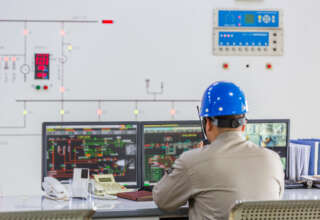Heated vests have revolutionized how we stay warm outdoors, offering a blend of technology and comfort for those seeking to brave the cold. However, navigating the spectrum of available options can be overwhelming. This comprehensive guide aims to simplify the process, providing clear insights and essential considerations to help you choose the perfect heated vest. Whether you’re an outdoor enthusiast, a professional in need of warmth, or simply seeking a solution to combat the cold, this guide will streamline your decision-making process and ensure you find the ideal heated vest for your needs.
Benefits of Using a Heated Vest
Heated vests offer numerous benefits for individuals who face chilly climates or engage in outdoor activities during colder seasons. The primary advantage is the ability to stay warm and comfortable, even in freezing temperatures. By providing consistent heat to the torso, a heated vest helps to retain body heat, preventing hypothermia and maintaining optimal performance.
Moreover, heated vests can aid in relieving muscle stiffness and pain. The targeted heat therapy provided by the vest promotes better blood circulation, offering therapeutic benefits to individuals suffering from muscle soreness or discomfort.
Why invest in a heated vest?
Investing in a heated vest can significantly enhance your outdoor experience during cold weather. Whether you enjoy hiking, or skiing, or simply want to stay warm while running errands, a heated vest is a versatile and practical investment. With the right selection, you can prioritize your comfort, safety, and performance in challenging weather conditions.
Key Features to Look for in a Heated Vest
To make an informed decision, it is crucial to consider the key features of a heated vest that align with your specific needs and preferences.
Heating Zones and Settings
The number and placement of heating elements play a significant role in the effectiveness and comfort of a heated vest.
- Number and Placement of Heating Elements: Look for vests with multiple heating zones, such as the chest, back, and collar, to ensure thorough warmth distribution.
- Adjustable Heat Settings: Opt for vests with multiple heat settings, allowing you to customize the level of warmth according to the weather conditions or your preference.
- Even Heat Distribution: Ensure that the heating elements provide consistent warmth throughout the vest, avoiding cold spots or overheating in specific areas.
Material and Design
The material and design of a heated vest impact its insulation, comfort, and mobility.
- Insulation and Heat Retention: Look for vests with insulation materials that trap heat effectively and retain warmth, even in extremely cold conditions.
- Comfort and Mobility: Assess the vest’s fit and materials to ensure it is comfortable to wear for extended periods and allows unrestricted movement during activities.
- Waterproof and Windproof Features: Consider vests with waterproof and windproof properties to protect you from the elements and enhance your outdoor experience.
Power and Battery Life
Power sources and battery life are critical factors to consider for uninterrupted heat during outdoor activities.
- Battery Capacity and Charging Time: Look for vests with sufficient battery capacity to provide prolonged heat. Consider the charging time required for convenience.
- Heat Duration and Efficiency: Assess the power efficiency of the vest to ensure longer heat duration and optimal usage without frequent recharges.
- Power Source Compatibility: Ensure that the vest’s power source aligns with your outdoor activities and accessibility to power options.
Size and Fit
Proper sizing and adjustability are essential for comfort and optimal performance.
- Correct Sizing for Optimal Performance: Ensure accurate sizing to maximize the heating elements’ effectiveness and avoid discomfort caused by a loose or tight-fitting vest.
- Adjustability for Different Body Types: Look for vests with adjustable features, such as stretchable panels or adjustable straps, to accommodate various body shapes and sizes.
- Layering Compatibility: Consider the vest’s design and weight to determine whether it can be layered with other clothing for additional warmth without compromising movement.
Safety Features
Safety is a crucial aspect when using heated vests, particularly when dealing with electrical components.
- Overheat Protection: Look for vests with built-in mechanisms to prevent overheating and safeguard against any potential accidents.
- Insulation Against Electrical Hazards: Ensure that the vest has proper insulation and shielding to protect against electrical hazards.
- Quality Certifications and Standards: Consider vests that meet recognized quality standards and certifications, ensuring safety and reliability.
Summary
This explanation serves as a comprehensive roadmap for individuals seeking the perfect heated vest to combat cold weather conditions. This guide aims to simplify the often overwhelming process of selecting a heated vest by delving into essential considerations and insights. Covering a wide array of topics, it offers detailed information on various aspects, including technological advancements, specific features tailored to diverse needs, and key factors influencing the selection process. From outdoor enthusiasts to professionals requiring warmth in their work environments, the guide aims to streamline decision-making processes, ensuring readers find the most suitable heated vest to match their unique lifestyle and preferences.
Read More: How Home Insulation Works in the Summer?











